"A score average of 72.00 just won’t cut it on the major golf tours, so getting around your local golf course in even par or slightly better won’t be good enough to go to tour school as you will just spend a lot of money to find out that you are not ready yet." 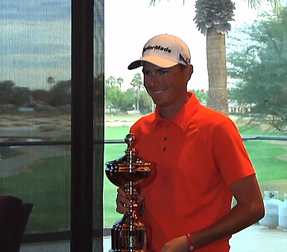 Zac Fisher Medalist 2014 Web.Com Tour Q School Zac Fisher Medalist 2014 Web.Com Tour Q School 24 year old Zac Fisher was lead medalist at the recent Web.Com Tour Qualifying Tournament at PGA West in La Quinta, California. Zac started with a 75 to be tied 130th in the 152 man field with 5 rounds to play, and then shot 34 under par for the next 5 rounds with 33 birdies, 2 eagles and just 3 bogies. I bet you'll agree that that’s some very hot scoring, but it is not at all unusual for the golfers who get through all the stages of qualifying school because that is the one thing that they all have in common; the ability to go low at any time and consistently. They don’t fear going low they love it! And if you want to be a successful tour player then you must love going low too! And often! 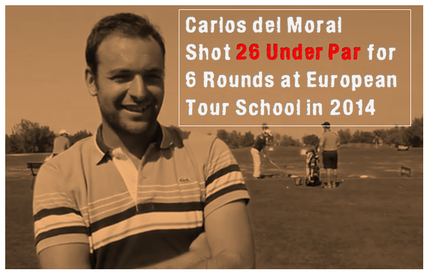 Carlos del Moral Medalist 2014 European Tour Q School Carlos del Moral Medalist 2014 European Tour Q School On the PGA Tour in 2013 Lee Westwood had a scoring average (actual) of 71.00 and ranked 84th. Think about it, 83 guys had a better score average than Lee's 71.00. On the Web.Com Tour in 2013 Martin Piller also had a scoring average of 71.00 and he ranked 91. 90 guys had a better scoring average than Martin. On the European Tour you were ranked 48th if you had a score average of 71.00, and in every case these fine tour golfers had played a lot more than 50 competitive tournament rounds to produce this great score average. What Do 968 Golfers All Have in Common? A total of 968 players took part in the European Tour Qualifying School over the 3 stages. 770 golfers competed in Stage 1 and they were joined by 114 for Stage 2, and 84 golfers were given exemptions for the Final Stage. Like the Web.Com Tour 25 golfers plus ties earned their full European Tour cards for the 2014 season. Spanish tour golfer Carlos del Moral shot 26 under par over 6 rounds to be lead medalist, and if you averaged 71.00 for 6 rounds at European Tour School you would not have got a tour card as that would have ranked you 37th, and 27th place got the last card. And a score average of 71.00 (- 6) at Web.Com Tour School would have left you tied for 85th. You needed to shoot 16 under or better for the 6 rounds, or average 2.67 under par each round to get your full card. I think you can see what is going on here, you must have the ability to break 70 often if you are considering going to a tour school anytime soon. 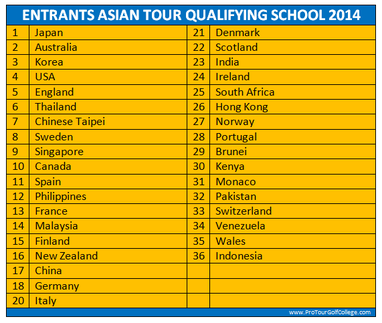 36 Countries and Counting... Consider that there are more than 700 golfers registered to go through qualifying school this year to try and gain a card on the Asian Golf Tour. All the top tier tour schools have similar enrollment numbers and the minor tour schools are similar. Like I have mentioned in previous articles, you need to be tour score ready to compete at tour school, so you have to get your score average in tournaments down to the standard where you have a very high chance of playing well enough to gain a card. So getting onto a major golf tour would seem to be a lot more challenging than staying on a major golf tour if you have a score average of 71.00 or better. The odds are against you qualifying unless you have truly got the game to go low often. 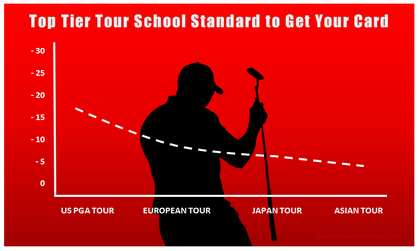 A score average of 72.00 just won’t cut it on the major golf tours, so getting around your local golf course in even par or slightly better won’t be good enough to go to tour school as you will just spend a lot of money to find out that you are not ready yet. Regularly scoring 72 will seem like a great score to your friends and the members at your golf club but it’s simply not good enough to play competitively on a pro tour. Here’s what you need to be able to do, and nothing less...
This standard is the minimum standard required for considering becoming a tour golfer and this standard will confirm that you can not only qualify to play on a professional tour but you will also be able to do the 2 things that tour golfers have to be able to do really well; 1. Make a lot more cuts than you miss 2. Make a lot more money than you spend Next week I’ll show you how to build a game for the tour from the ground up, with practice strategies that set you up to break par often, and with this information it will help you to live your dream of playing golf successfully on a professional golf tour one day soon. Lawrie Montague and David Milne - Pro Tour Golf College Your Success On Tour is Our Business 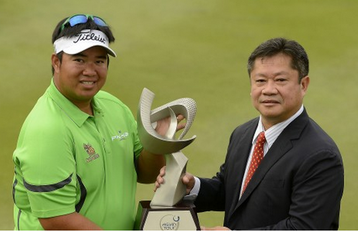 The twenty four year old from Thailand has followed in the foot steps of his countrymen Thongchai Jaidee and Thaworn Wiratchant in winning the 2013 Asian Order of merit. He changed his name from Anujit Hiraunstanakorn to Kiradech Aphibarnrat because he thought his second name was too long! Kiradech was a top ranking junior golfer and won his age group (13-14 years) twice at the World Junior Championship held each year at Torrey Pines golf course in California. Turning professional in 2009 it didn't take him long to win his first professional tournament, the Singha Pattaya Open on the Thailand local tour. Solid performances on the Asian Tour followed and in 2011 he won the Sail Open in India to seal his first victory on the Asian Tour. He is one of those players that has the game to shoot really low scores, but it's his"swash buckling" style that on occasions causes him to throw over par rounds in at crucial times in a tournament that stops him from winning more often. But keep in mind he's young and will learn how to win multiple times a year as he is mentored by the best professionals from Thailand. Kiradech said recently, "growing up in the company of Thailand's golf legends has been the biggest influence, I continually learn something from the other top Thai professionals".
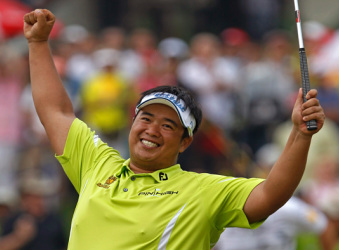 At 104 kilograms and standing 5' 8" and with a current World Golf Ranking of 60 he is quoted as saying, "I cannot say I will win a major, but it is my goal to win one for sure". Kiradech's immediate goal is to play himself into the top 50 in the World Golf Rankings in the next month which will guarantee him invites to play all golf's majors this year. With his Malaysian Open win gaining him two years playing privileges on the European Tour he will have ample opportunity in the tournaments played in the Middle East and South Africa to achieve his top 50 World Golf Rankings goal. Now with the opportunity to play full time on the European Tour and to also travel with Thongchai Jaidee (who will show him how to plan his year effectively) he is on the cusp of becoming one of the best Asian players, and it is likely that he will have a long and successful career. We will follow his progress this year and report back to you on how Asia's top "young gun" progresses. David Milne and Lawrie Montague - Pro Tour Golf College Your Success On Tour is Our Business 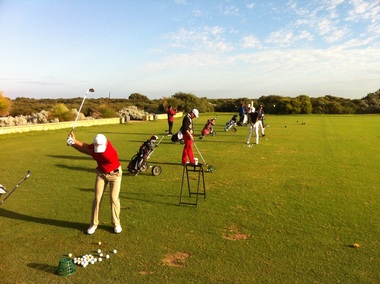 How much practice should a junior or college golfer do if they want to become a top ranked amateur, or become a professional tour golfer? It’s a great question and I suppose you could answer it by simply saying “a lot,” or “many hours,” or possibly “more than everyone else.” Pretty vague though, don't you think? None of these answers will help you to understand the answer. Specifically how many hours should you practice to become a top ranked amateur or professional golfer? The answer to this question depends on two main factors;
If you look at 7 days in your week and calculate the average available daylight hours (different depending on where you live and the time of the year) you have available to you it is fair to say that you have at the very least 8 hours per day of daylight and 56 hours in a week. So how much time do you need to spend developing your craft out of the 56 or so hours you have each week? If you are serious about becoming a top ranked amateur or professional golfer then we would tell you that you need to practice for a minimum of 20 hours each week working on improving your golf skills. On top of this you will need to spend another 10 or more hours per week on the golf course developing your playing skills when you are not competing in tournaments. Yes, you will need to practice for 30 hours or more each week. Don’t believe me? Then have a look at our Elite Golfer Improvement System model below that describes the 18 core golf skills that you need to practice to develop your game to the highest level. How many of these 18 golf skills are you NOT practicing every week? On the top row there are 18 different types of golf skills in 6 different performance categories from short-game to long-game and also on the golf course that need to be practiced. We call these the 6 golf practice pillars and they are the foundation skills that you build your game upon. Olympic athletes typically spend 4 to 5 hours per day for 6 days per week training and preparing for upcoming events, and they will do this for 8 or more years. Olympic champion Michael Phelps (22 Olympic medals) trained for 6 hours per day 6 days per week for more than 10 years. And he used to train on Christmas day! How Much Practice Does Tiger Woods Do in a Day? Tiger Woods golf practice and physical training routine is quite intensive when he’s not competing at tournaments. The following routine was posted on his website at http://www.tigerwoods.com/fitness/tigerDailyRoutine and gives you an idea what the best golfer in the world does with his available hours when he's home. In the example below Tiger trains from 6.30 in the morning to 7pm at night, a total of 720 minutes a day, which translates into a solid 12 hour day! Notice that 7 to 8 hours of this daily routine is devoted to golf skills development, which includes full-swing, short-game and golf course practice. OK, that's great for Tiger I hear you saying but I go to high school or college and I don’t have 30 available hours each week to devote to my game, what then? If you are a junior golfer or college golfer then you are not really that different to Olympic athletes who go to school or college and have to still find the time to practice or train right?. You can practice before class and also after class and you would be surprised how many hours you can actually devote to practice over 5 or 6 days if you really want to. No serious golfer is exempt from practicing for at least this amount of hours each week if they truly wish to become a top class golfer. But having said that if you simply cannot devote the 30 or more hours required, then be sure to read the rest of this article to find out how to do less practice but gain more from each practice session. The 18 Core Golf Skills Practice Log Take a moment now and assess how much time you spend in the 18 core golf skills in the following table. Write them down on a piece of paper and work out about how many minutes each day you spend practicing the 18 core golf skills and then total them up for a week. This log below is a really simple way to determine how much time you actually spend on each of the 18 core golf skills. In the example below you can see the amount of time this college golfer spent at each skill over a week for a total of 10.5 hours of practice for the week. Now 10.5 hours of practice is a long way from 30 hours right? But what if you could practice just 10 hours per week but get the benefits of 30 hours of practice? I bet that would be something that would interest you? To find out how this is possible start by using this simple golf skill time log below to help you to understand where you spend most of your available time on your game each week, and also whether you are not practicing some of the skills in other important skill categories. In the following example this college golfer practices 13 of the 18 golf skills. Of the 5 skills that she doesn't practice 3 of them are skills she is very week at, (rough shots and golf course mapping and strategy) and this actually has a huge effect on her performances in tournaments. Just in case you were wondering, the golf course mapping and strategy skills (red category) are your golf tournament preparation skills, this is where you go out to the golf course that you are playing your next tournament at to chart each hole carefully to develop the best game plan possible based on your current strengths and weaknesses. Golf course attitude describes your daily mental skills practice on the golf course where you are working on skills such as your pre-shot routine, your self-talk and your visualisation routines etc. 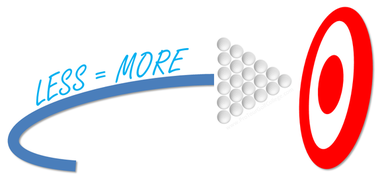 The Less = More Golf Practice Strategy The key to practicing less hours but with much better results revolves around a simple yet highly effective golf practice strategy we call the Less = More Golf Practice Strategy, and it basically works by doing the following 3 things.
We have found that this simple strategy is by far the best way for junior and college golfers with limited time on their hands to gain a great deal more from their practice sessions, and by using the Less = More Golf Practice Strategy and by breaking up each hour of practice into 4 unique time periods of 15 minutes each you will dramatically improve the quality of your golf practice and achieve much better results because of it. 1 x 10 x 100² We have a really simple way of describing how the Less = More Strategy works and its called the 1 x 10 x 100 squared rule. Basically our rule says that every golf shot you hit is performed with your absolute best level of attention, commitment and focus and that one golf shot multiplied by 10 balls multiplied by 100 squared describes the secret to success in practice. 1 quality golf shot x 10 quality golf shots x 100 quality golf shots squared is a lot of golf balls hit with very high level of quality. This is the key to your golf success!
This is the Less = More Golf Practice Strategy! You see, you can just stand on the driving range pounding golf shot after golf shot mindlessly and yes you might more golf shots than you would using the Less = More Golf Practice Method, but you will never be as good as you want to be doing it this way. This is one of the main reasons we find that many junior golfers and college golfers don't improve. They hit a wall with their improvement and struggle to break through. Hitting lots of golf shots mindlessly at a driving range without a definite plan for improvement because you are under the mistaken belief that hitting lots of golf balls will make you a lot better is a BIG MISTAKE. However by hitting 10 ball sets (10, 10, 10, 10...) with your full focus on isolating each shot (1, 2, 3, 4...) and by reducing your time time window down to 15 minutes for each skill set will develop each of your golf skills faster and this will lead you to lower golf scores and improved performances in tournaments. And the best part is that you will be able to practice the 18 core golf skills in less time but with more improvement! This is exactly why we developed the Elite Golfer Improvement System (E.G.I.S) below primarily for serious junior golfers and college golfers. We designed the E.G.I.S program to teach you how to do more quality practice in a lot less time by developing your 18 core golf skills correctly so you are able accelerate your golf skill improvement. We have discovered that when junior and college golfers with limited time to practice learn how to practice by designing their practice sessions around focused 15 minute windows that they perform a lot better in their tournaments.
So why don't you apply the Less = More Golf Practice Strategy to every practice session from now on and you will discover that you can practice a lot less hours but gain a lot more from each practice session. Remember that the quality of your golf practice is far more important than the amount of golf balls you hit, so practice the Less = More way and you will enjoy the process of improvement that will surely come to you as a result of using this accelerated golf practice success strategy. Lawrie Montague and David Milne - Pro Tour Golf College Your Success On Tour is Our Business Who are the 5 PGA Tour Players Under the Age of 30 That Will Make a Big Impact in Golf in 2014?11/1/2014
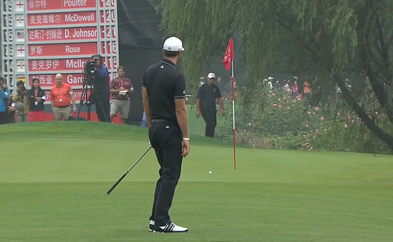 With the 2014 PGA Tour season underway (since October last year) and with seven tournaments having already been played, some of the younger PGA Tour players are standing out. In recent times there have been many a teen star that has started their career brilliantly with a win in their first year, after turning professional. But most find the transition from the amateur ranks to the professional ranks a difficult one. Many of the golfers who turn professional in their teens tend to start with an early win but don't sustain it, and come back to the field. Maturing as seasoned professionals in their late 20's Aaron Baddeley, Ryo Ishikawa, Matteo Manassero and Rickie Fowler come to mind. It has long been believed that professional golfers peak between the ages of 27 years old to 35 years old. This is even true of Tiger Woods, who although he dominates the regular tour events, has not won a major (US Open 2008 was his last) since his 35th birthday. He won most of his "Majors" (8 out of 14) between the ages of 27 and 35. With more "young guns" snapping at his heels, Tiger will find it increasingly more challenging as he approaches his 40th birthday. Still, there have been players who have continued to win regularly in their 40's; golfers such as Phil Mickelson, Vijay Singh, Kenny Perry, Jim Furyk and Steve Striker to name a few. And the main reason is that they have looked after themselves physically, and have increased their longevity in the game compared with players in the past. Another incentive for mature professional golfers has been the lucrative champions tour (over 50's) that has encouraged players in their 40's to stay in shape so they can continue to compete at the highest level until they reach 50 years old. 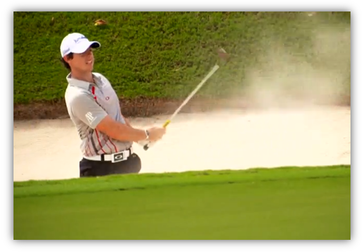 So who are the current top 5 players under thirty years of age that stand out - not only from other young players, and who I believe will dominate the PGA Tour in 2014? My picks are;
I haven't gone out on a limb with my predictions as these five are already proven winners on the PGA Tour and have the pedigree to win Majors which makes them stand out from the others. Rory and Keegan have already won Majors, Dustin and Jason could have won their first major on numerous occasions. Jordan knows how to get into contention and has notched up 2nd place four times in 2013. And looked like winning at Kapalua last week until Zac Johnson shot 66 in the last round to beat him by one shot. 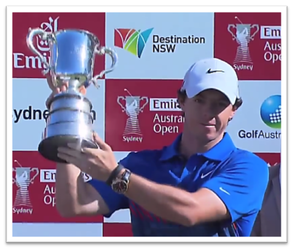 Rory McIlroy After a tough year of changing equipment and off course issues like law suits with former management companies/agents, the year ended well for Rory, with him winning for the first time in 2013 at the Australian Open at Royal Sydney Golf Club. This will be a perfect springboard for him to launch his 2014 campaign and combined with his personal life back in order he announced his engagement to girlfriend Caroline Wozniacki (former number one ranked tennis player). Mind you the engagement ring set him back 120,000 pounds which will be added incentive to play well and recoup the investment! The former number one has slipped down the rankings, but I believe will bounce back this year. With an all round ranking of 26th (8 categories of stats) in 2013 (which was an average year for him) he has the game to bounce back this year. Areas that require improvement are;
 Dustin Johnson He is a truly a world class player in every aspect. He has won 8 times on the PGA Tour and has had the opportunity to win majors at the PGA Championship at Whistling Straits and the US Open at Pebble Beach. He is big guy (6'4") and could dunk and palm a basketball in year seven; in short he's very athletic. Dustin like Rory travels all over the world to play, and draws the crowds out to watch him play. With the prodigious length he drives the ball and in 2014 ranks;
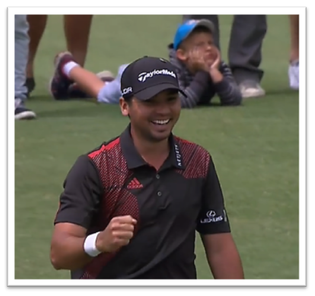 Jason Day Probably a little biased here but Jason is from Australia and he just keeps improving each year. After winning the Byron Nelson in 2010 his game has grown in leaps and bounds. He's run second twice at the US Masters, and seems to play better in the "majors". Winning the individual and the team title at the World Cup late last year was a huge boost for his confidence, as he had not won as a professional outside of the USA. He has the game to compete in all conditions, and like Rory and Dustin, Jason needs to travel more outside of the PGA Tour to truly be considered a world class golfer. Last year his score average was an impressive 69.763 and he ranked 11th on the money list. He drives it long off the tee, ranking in the top 20 each year on the PGA Tour. Combine this with his Strokes Gained-Putting of -368 against the field, and a ranking of 29th in 2013, this is a recipe for low scoring. His all round ranking on the PGA Tour was 14th in 2013, and that puts him right up there with the best. Expect good performances from Jason in the coming months leading up to the US Masters. 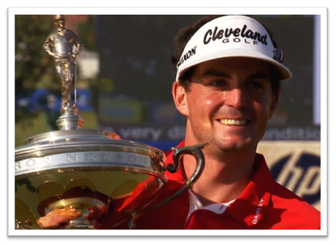 Keegan Bradley Keegan has left coach Jim Mclean late last year and has teamed up with Chuck Cook, who also coaches Jason Dufner and Luke Donald. It is always an interesting time when players make a decision to change swing coaches, and not always is there a happy ending. All I can add to that is that Jim and Chuck have similar swing philosophies so we will have to wait and see how things pan out. Keegan has won three times on tour including a major (PGA Championship) and like the top three he bombs it off the tee (ranks 11th) and does everything else very well. He is ranked inside the top 50 in all 8 major statistical categories, which correlates to an All Round Ranking of 4th. And as he has publicly declared that Michael Jordan (Basketball Legend) is his Mental Coach, so it makes it even more mind boggling that he has changed swing coaches! As he turns twenty eight in August he is in the zone where he can take his game and performance to the next level. 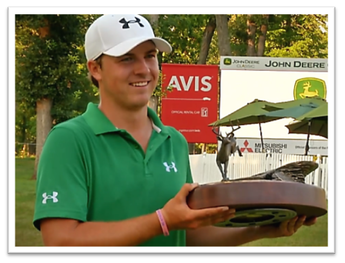 Jordan Spieth Jordan has only won once on the PGA Tour, but he is the first teenager to do so in 82 years! Yes you read it right, 82 years since the last teenager won on the US Tour (that was Ralph Guldahl) and so nearly the only teenager to win twice, as he has finished 2nd four times since he turned professional. A young player with huge amount of ability to perform at the highest level. He's a fierce competitor, and it's not confined just to the golf course. Jordan is the new breed who are "athlete first and golfer second". At the last President's Cup (where he was the captains pick) he took on Mat Kuchar who is acknowledged as the best ping pong player on tour and beat him. Matt said "Jordan had a look in his eye that tells me I must be better prepared when we next meet at the table". He is an also an accomplished basket ball player who can go up one on one against his brother Steve who plays guard at Brown University, and Jordan beats him regularly. Jordan is ranked 3rd in the All Round Category and thrives on being in contention. I love watching him play as he seems from the outside to play with a lot of flow and freedom. He is a young player who reminds me of Greg Norman in the 1980's, who the public wanted to pay money to watch play golf. The game needs more Jordan Spieth's and I look forward to following his progress in 2014 and beyond. We have finally seen the coming of age of Adam Scott last year, and it will be interesting to follow the five players I have mentioned above and the up's and down's that they experience playing top level golf. We will watch the drama unfold on our TV's as they for victory, providing us with great moments to witness and enjoy. And it is exciting that we might possibly be watching history being made and these young golfers try to break records and become the next generation of golf superstars. David Milne and Lawrie Montague - Pro Tour Golf College Your Success On Tour is Our Business Playing golf on a professional golf tour is one of the toughest career decisions you will ever make because you are continually facing the realization that your golf scoring ability is all that counts. And even though you have had it drilled into you repeatedly "to stay in the present,” and also “don't think about your golf score,” the fact is that pro tour golf is all about score, and how good your scoring ability is. This is the reality of pro tour golf... Pro Tour Success = Competitive Score Average. I was asked a good question this week from a father of one of our students who asked me why his friend’s son (who turned pro in the past two years) has been struggling to qualify to play in pro tournaments, make the cut and make some money. So I thought I would share with you why many rookie pro’s struggle to make the transition from amateur golf to pro tour golf and what they can do about it. Young and ambitious guys and gals work out pretty quickly when they get to a pro tour that unless they develop their golf scoring skills to a very high level, they are going to be faced with missing qualifying, not making cuts and not making a dollar. 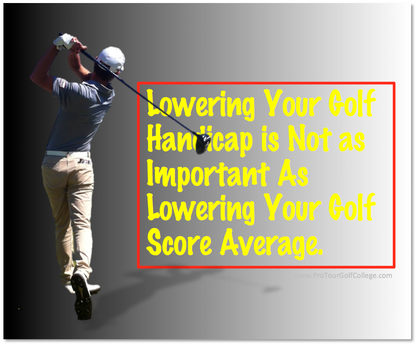 In amateur golf your golfing ability is defined more or less by how low you golf handicap is, rather than your golf score average. BIG PROBLEM if you want to play golf competitively on a pro tour sometime soon. Because the irony in amateur golf is that you can have a very low handicap and yet produce relatively high golf scores in tournaments. How does an amateur golfer who carries a 2 handicap score in the high 80’s? In other words, an amateur can play poorly in a tournament and dare I say it give up during the round, and know that there are no real consequences because they will get another chance to play in another amateur event. This mind-set of giving up on your golf score (and yourself) during the round does have dire consequences though. Even the bad habit of not handing score cards in at tournaments is destructive, and this attitude just doesn’t cut it in pro tour golf. Pro tour golf is all about making cuts and making money, that’s the bottom line. It is a business and radically different to amateur golf. You have to be mentally very tough in your ability to keep your golf score going in every round you play, and face set-backs bravely by being brilliant at bouncing back when adversity strikes. Practicing giving up on your golf score is a BIG MISTAKE! Your scoring ability is your weapon against adversity, and your level of mental resilience and competitive score average are the only things that will keep you in the game and ultimately become successful. You simply don’t have the luxury of being able to give up on your golf score when things are not going your way in pro tour golf; you have to rely on your golf scoring skills, grit and determination to keep you on track with making the cut, and making a check. Go to any national open and you will see top amateur golfers on the range going shot-for-shot with the top pro’s, but when you add up the scores at the end of 18 holes, the tour pro’s scoring ability generally shines through. Tee to green there isn’t a lot of difference between top amateurs and tour pro’s, but there’s a massive difference in scoring ability. 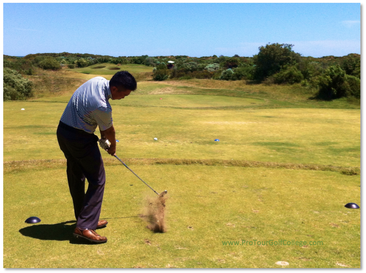 “But wait a minute I hear your say, what about so and so, they turned pro and look at how successful they have been?” For every one golfer who makes the transition from amateur to the pro tour successfully, ninety-nine won’t! So here’s what you need to know to help you make the shift in mind-set and game. Firstly you should not turn pro until you can play good enough to qualify to play in pro tournaments, and you should be able to make fifty percent or more of the cuts. Believe me, there is no value in “trying” to play on a professional golf tour. The 3 Trials of a Professional Tour Golfer Trial Number 1. You will have to be able to play good enough to qualify through a tour school to compete in professional tournaments. You will regularly be producing scores in the 60's on par 70, 71 and 72 challenging layouts in big amateur tournaments. Trial Number 2. You will have to produce a low enough competitive score average for the first 2 rounds of every professional tournament you compete in just to make the cut. This standard will be par or better for you to make a high percentage of cuts during a season. Trial Number 3. After you make the cut you will then have to produce a low score average in round 3 and 4 which will always be under par to make enough income that is greater than your expenses. These are the three trials every professional tour golfer must overcome in their career. “But I was told that turning pro is good experience?” “No, not true!” Turning pro is a very expensive, and the most important career decision that you will make, and it shouldn't be taken lightly. The person that can help you to decide when you are ready to make the plunge is your golf instructor/coach, or a professional golfer who knows you and your game well. This is one of those rare cases where some of the well-meaning people in and around golf just don’t know what they’re talking about. Ask someone who has played on a pro tour how difficult it is. They will not sugar coat it for you, they will tell you exactly how it is. Because they know how tough it is they will be honest with you and also realistic about your chances. “What if I can afford to play on a pro tour?” 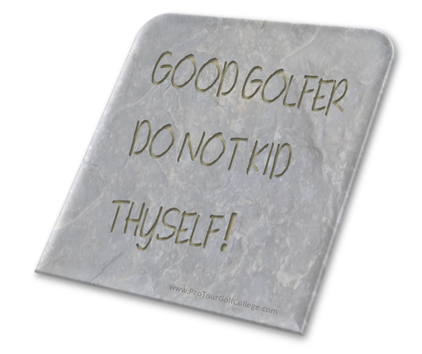 It doesn’t matter whether you have the money, or you can play on someone else’s dime. The fact remains that if your scoring ability isn’t good enough you won’t make progress e.g. you won't qualify and/or make the cut - but you will spend a lot of money. Basically there are two main factors involved in your decision to become a tour golfer.
Here is an important distinction that will help you to understand the main difference in amateur golf to pro tour golf. In amateur golf you might reduce your handicap and your golf scores relatively quickly (see image below). You might for instance go from a handicap of 8 to a handicap of 2 in 18 months or less. But to go from a 2 handicap to a plus 2 handicap might take you 2 or more years. And you will need a legitimate plus 2 handicap or better to even consider becoming a pro tour golfer because as I have already explained you will need to get your high score average down to just over par on your very worst days on challenging golf courses in big amateur tournaments. The Pro Tour Performance Threshold On the pro tour there is a performance threshold or tipping point that basically determines to a great extent whether you will make more cuts than you miss, and make more money than you spend. Now when you get to the pro tour you might for example have a score average of 74 in pro tournaments for the season. And your 74 stroke average has helped you to play in some pro tournaments, make a few cuts and sometimes even make a check or two. But you need to realize that it might take you 5 or more years (you read correctly) to lower your golf score average to say 71, the tipping point where you will make many more cuts than you miss, and a lot more money than you spend. Now the question you have to ask yourself is do you have the skills and determination to overcome the 3 trials every professional tour golfer must face?
And when you qualify to play on a professional golf tour can you fund your pro tour experience for 5 or more years? In other words do you have enough game to keep paying the bills when there is “more month at the end of your money?” This is the reality of the continuous challenge of pro tour life. Like I wrote earlier, your golf scoring ability is your weapon against adversity, and your level of mental resilience and your competitive score average are the only things that will keep you in the game.
Find a golf instructor who can teach you all the skills of the game of golf - NOT JUST THE GOLF SWING, but all the shots you need to play golf successfully on tour. Develop your golf scoring ability first; train every aspect of your game to be good enough to qualify to play in professional tournaments. Remember it is not enough to qualify; then you need to learn how to make at least 70 percent of cuts. Finally, the income you earn is in direct proportion to your ability to achieve a low competitive score average. This is the bottom line of professional tour golf. Is it easy? No, but it is doable. So get to work on it today, so you can make it happen tomorrow! Lawrie Montague and David Milne - Pro Tour Golf College Your Success On Tour is Our Business "Like his father, he wasn't too sure of his answer and I explained that when you get to a low score average a core competency you need to develop is to track your golf course statistics carefully and get out of the habit of taking random lessons, or listening to random opinions as a reaction to poor play in tournaments." 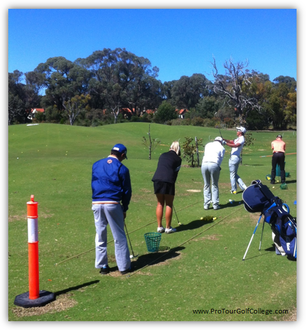 One of the comments I read often by golf tour pro’s when interviewed about their goals for the New Year is to “keep getting better.” That’s great I think to myself, who doesn’t want to keep improving their golf? I guess the obvious question that needs to be asked though is how? How do you keep getting better at your golf? Recently I met a nice young tour player and his father and was asked by the father whether I would give his son a quick lesson. I thought for a moment and then decided to decline the offer because my knowledge of the situation is that this young tour golfer has had quite a few lessons (and opinions) from various teachers I didn’t want to be another sharing an opinion. His father was quite surprised that I declined the offer and asked me why and I said that I wouldn’t want to share an opinion on what I think his son needed to work on without a good deal of accurate information on his background performances, and as an example I asked a couple of simple-straight forward questions to them. "What is your tournament score average for last year up until your last tournament?" The father’s response was that he didn’t know, and then I asked him why he didn’t know considering that his son competed for a living on an extremely competitive professional tour. Again he had no response to the question. I then went on to say that it is difficult to improve a tour golfer’s score average (when they are already scoring close to par most of the time) without specific knowledge about their performances in tournaments. I said to them that just giving a golf lesson to your son doesn’t solve much of anything. Sadly this scenario is not uncommon though and many elite golfers do precisely this. It seems to be a “try this instructor and try that instructor” approach to golf improvement today, rather than working towards a long-term goal of lowering your score average bit-by-bit over several seasons. (See part 1 of this article) My second question was; "what specific golf skills are the ones that are having the most negative effect on your score average in tournaments?" Once again his father just looked at me with a blank stare and then I turned to the young tour player and asked him what he thought. Like his father, he wasn't too sure of his answer and I explained that when you get to a low score average a core competency you need to develop is to track your golf course statistics carefully and get out of the habit of taking random lessons or listening to random opinions as a reaction to poor play in tournaments. I explained that it would be better to start tracking your performances in each tournament so you can make informed decisions about what you need to focus on and improve. It is never enough to just say you want to improve your golf; you need to assess your current position and determine which golf skills need your attention moving forwards. We have found that the reason this type of approach exists mainly is because the players outlook is short-term. In other words, they’re not seeing the big picture of their career, just a very small one. This leads me to our next letter in the P.L.A.N approach to building your annual golf success plan. 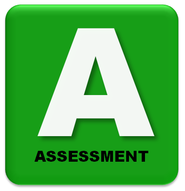 A = ASSESSMENT: How do you know whether what you are working on is actually getting better? Well, the easiest way to know is to perform a regular golf skill assessment throughout your golf season to determine whether what you are working on getting better, staying the same or even getting worse. An assessment of your golf skill ability is essential part of your planning process if your desire is to lower your golf score average, and the key to this is to set up your assessment so that you are put under enough pressure to determine whether your golf skills are at the automaticity stage or still at the cognitive stage. This means that you can execute a golf shot under pressure without thinking about how you will do it, and you can do it with a high amount of success - say 70 percent of the time. Alternatively if you can't execute your shot under pressure without making mistakes 70 percent of the time, or thereabouts you are more than likely at the cognitive stage of learning. Remember that the idea is to improve your key golf skills to lower your golf score average. Don’t forget this, as this is the real reason you practice as hard as you do. Thus the ultimate goal of your seasonal golf success plan should be to perform to the best of your ability in the most important tournaments that you have chosen as your majors. Australian sports psychologist John Crampton once shared with me that the last golf skill you practice is the first one to break down under pressure. So like I said, if you have golf skills at the cognitive stage (conscious competence stage) then under pressure you are likely to experience poor results under the type of pressure you will face in tournament competition. This is why it is critical to choose your golf skills wisely during your season and aim to work carefully and patiently on your weakest-most important skills at the appropriate time in your training phases. What you are effectively doing throughout the golf season is negotiating your way to better golf scores by adjusting the volume, intensity, frequency and type of practice you do to facilitate change.  N = NEGOTIATE: Negotiation in this context means to overcome the normal daily challenges and adversity of learning and improving your golf skills, and the main tools you use to do this are;
As you know, how you practice is every bit as important as what you practice, and learning how to vary one component over another can have a dramatic effect on your performances on the golf course. At Pro Tour Golf College we assess the golf skills of our students continually to determine which golf skills are the weakest, and by improving them it will have the most positive effect on their competitive score average. From here we establish a performance forecast for the season to help us to establish guide posts along the way and then we work out the amount of volume and intensity that we believe is required to help our students to achieve their performance targets in golf skills and golf score. The following image (below) is the next stage in our annual golf success plan and you can see that I have included a forecast model for the season (Score Average Forecast) and in this example the stroke improvement we are aiming to achieve each month is 0.166 strokes improvement per month. The aim is to lower the competitive score average by 1.8 strokes from 75.0 to 73.2 over the season (51 rounds) and although we know that it is never as simple as forecasting a score average in a linear fashion, you will find it very helpful to establish a forecast like the one below. How did we do it? 75 minus 73 divided by 12 months = 0.166 strokes improvement per month. Our suggestion is that you sit down with your golf instructor to put your forecast into place for your weakest golf skills and also your golf score. GOLF PLAN AND DESIGN STAGE 3 - GOLF TRAINING FACTORS (REGULATING VOLUME, INTENSITY AND TAPERING)Below the score average forecast we establish a profile of where we regulate the volume and intensity of the golf practice over the season. Can you see that golf practice to improve performance is a negotiation of time and effort? It is not a perfect science so you need to be extremely flexible with your approach because it is likely that you will have to alter your approach more than once during the season. The idea is that when you are working on skill development it will take place in a general preparation phase and that you will be hitting higher volumes of golf shots in this phase than you will when you are in a competitive phase. In a competitive phase your volume goes down and the intensity of your practice will rise. Notice in the image above you can see how I have a blue line representing volume and a green line representing intensity? When the blue line is high the green line is down, and vice-versa. In most cases you will notice that when volume is up it is in a preparation phase, such as general preparation or specific preparation. When the volume goes down and intensity rises you will be practicing shot-making skills to targets and basically sharpening your scoring ability. 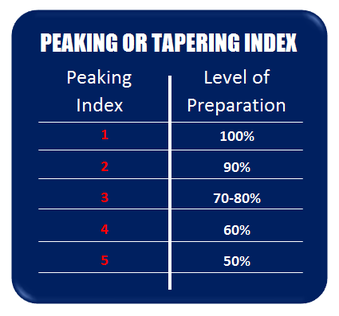 The peaking or tapering index (red dotted line) describes the golfers level of preparation leading towards their most important tournaments. Basically this line indicates your level of preparedness leading into your major tournaments that you have decided are the ones you most want to perform your best in. Notice how the closer you get to your major the red dotted line peaks? At the same time notice how the volume and intensity lines have dropped? This 'peaking' is achieved by manipulating the volume and intensity of your practice at-least 7 to 10 days leading into your major to allow you adequate time to recover mentally and physically so you are fresh leading into the tournament. During your peaking or tapering phase your practice load is much lighter and ideally you will be reducing the number of practice sessions within your weeks leading up to the tournament and you will find it beneficial to get into a game mode by practicing fun scoring games with your friends and generally reducing the amount and intensity of your golf practice. In many ways your ability to P.L.A.N your learning and improving describes your daily attitude and dedication to continually find ways to improve your game, and do it in a positive and optimistic way.
Golf performance change is one of the most difficult challenges you will face both mentally and physically, and having a spirit of determination and optimism (along with a good plan) will help you to negotiate the changes necessary for you to have a successful golf season. Using the P.L.A.N approach to change will help you to manage your expectations and also help you to stay patient, which are two of the biggest challenges you face as you move from one side of your golf season to the other. We wish you the very best for your upcoming golf season and know that if you follow our advice about building your golf success plan the way we have described, then you can be sure that you will be one step ahead of the game, and one step closer to winning one of your majors. Lawrie Montague and David Milne - Pro Tour Golf College Your Success On Tour is Our Business |
Archives
June 2019
|
Proudly Supported By
Copyright © 2011 - 2018 Pro Tour Golf College
Website Managed By Golf Performance Media
All Rights Reserved
Website Managed By Golf Performance Media
All Rights Reserved


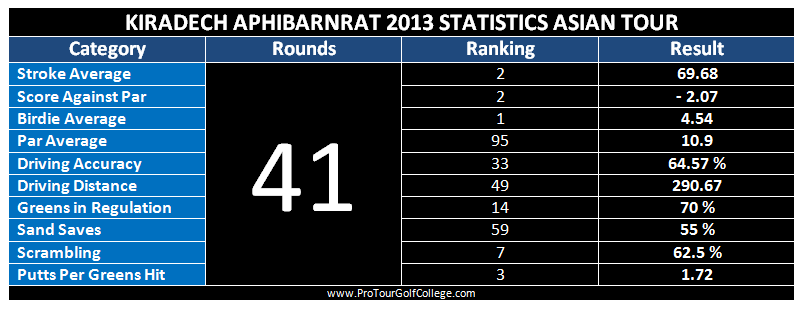

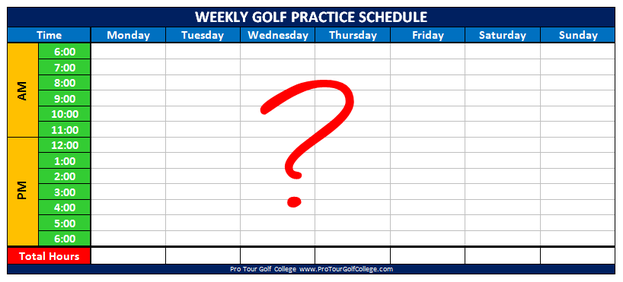
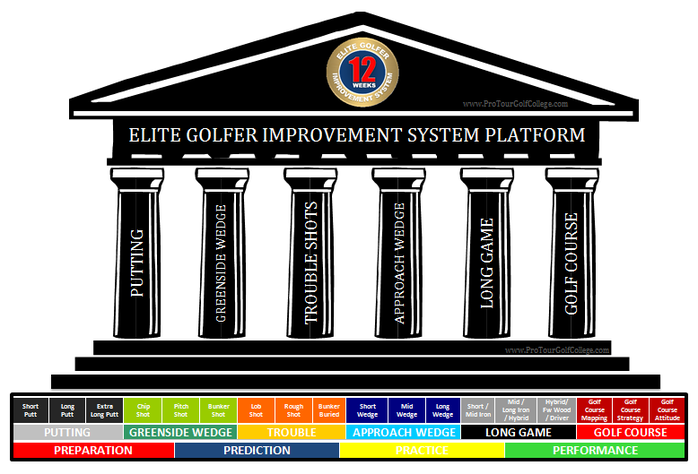
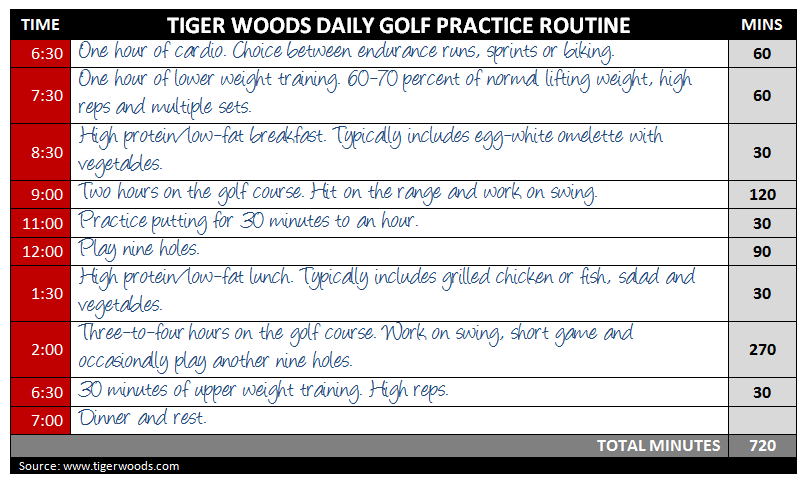
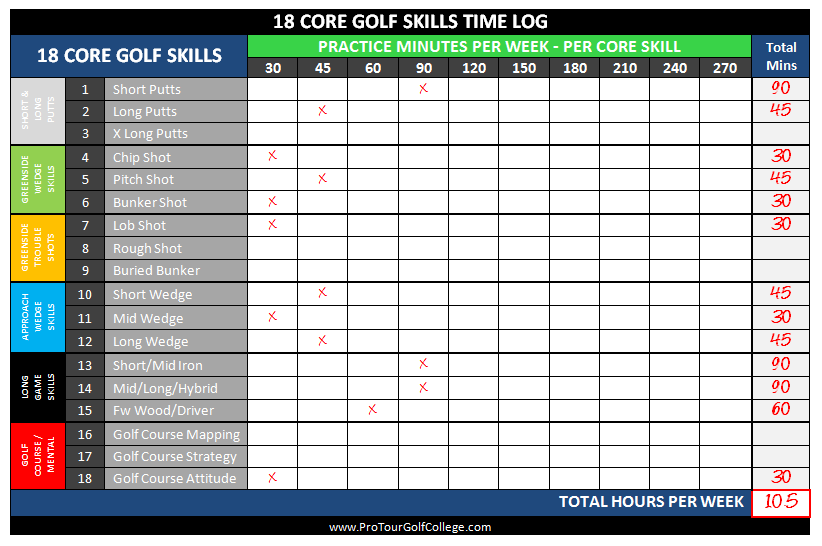
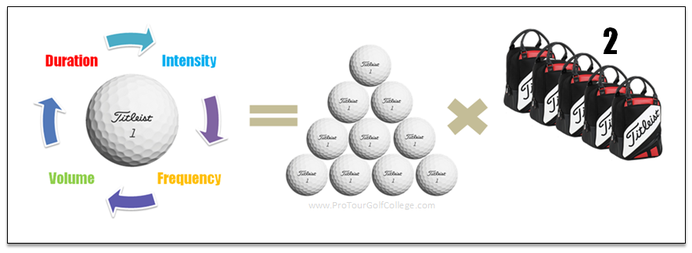

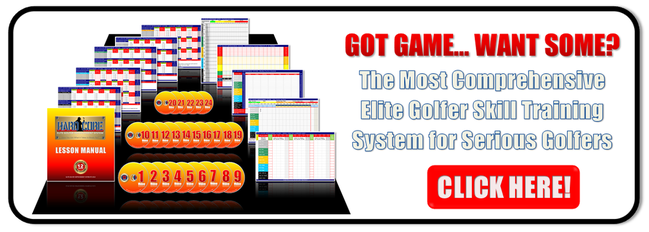
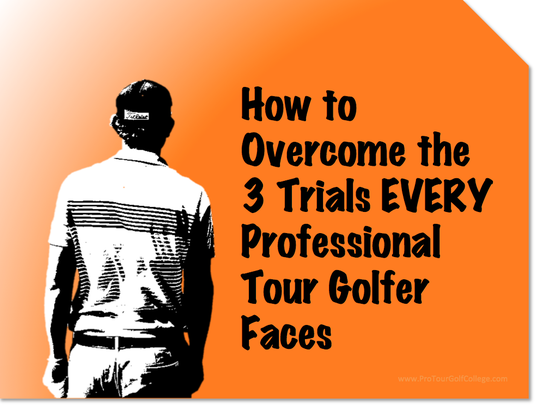
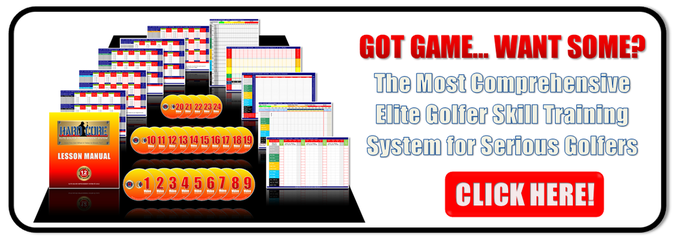
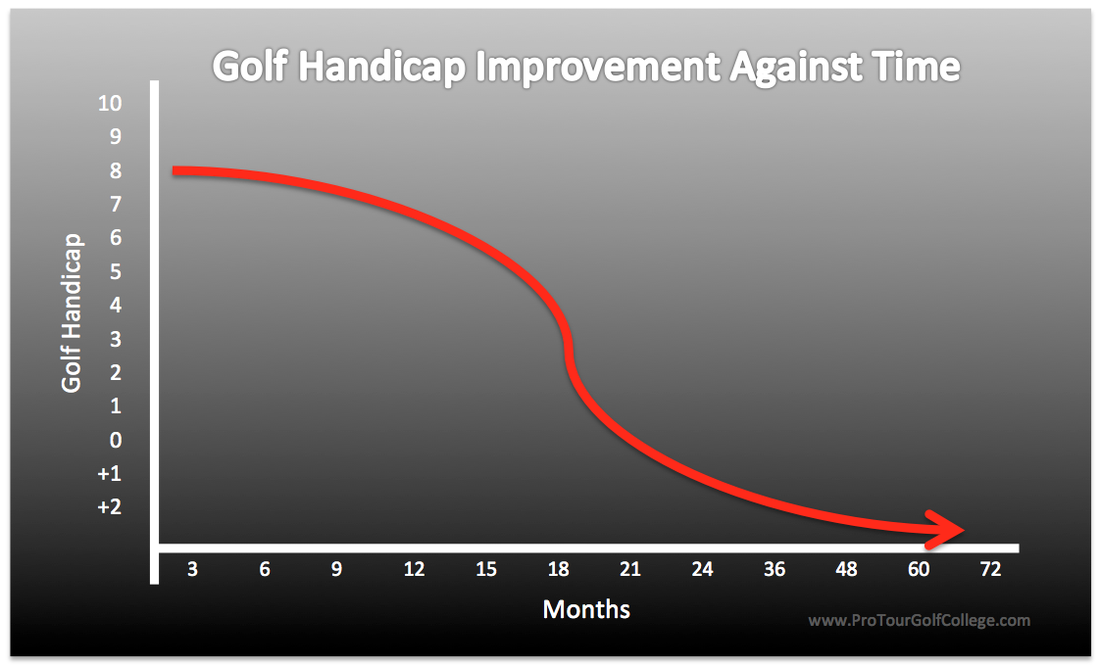
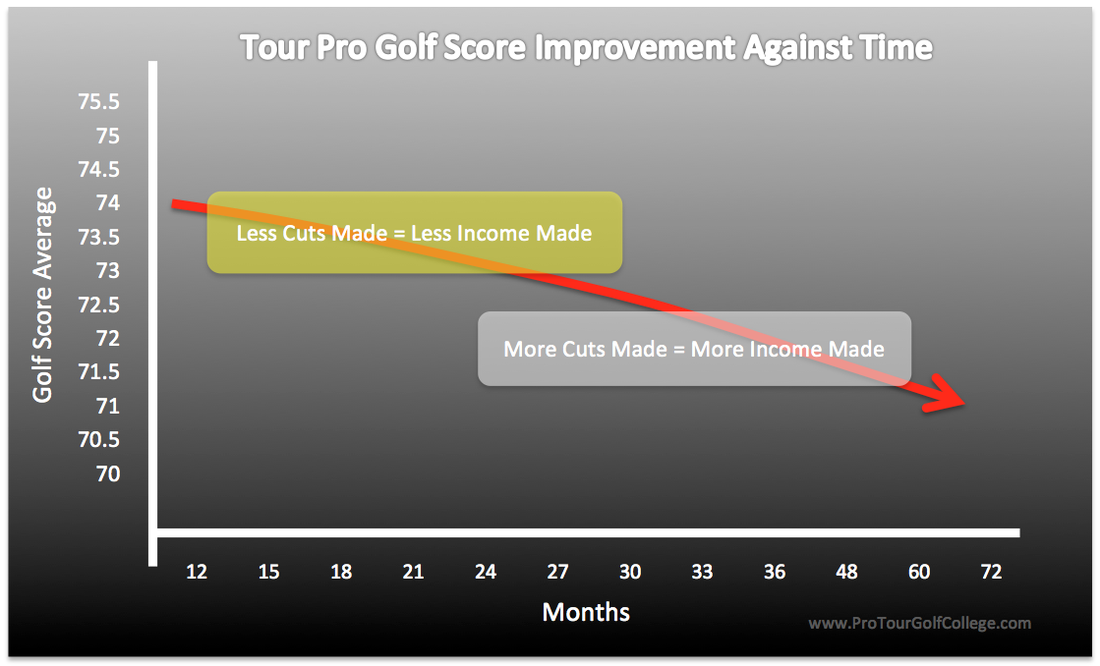


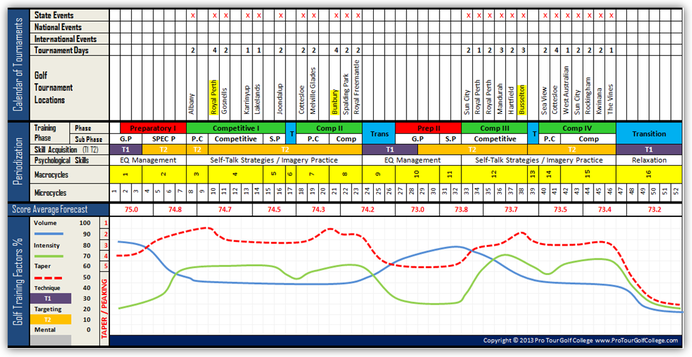

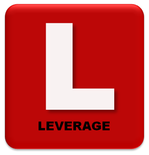
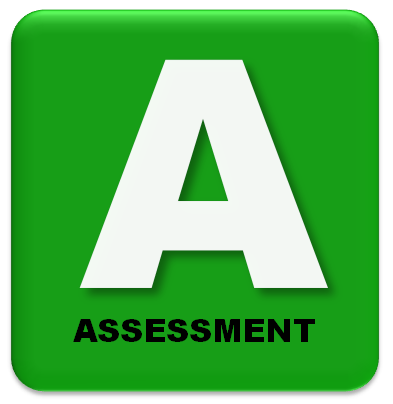
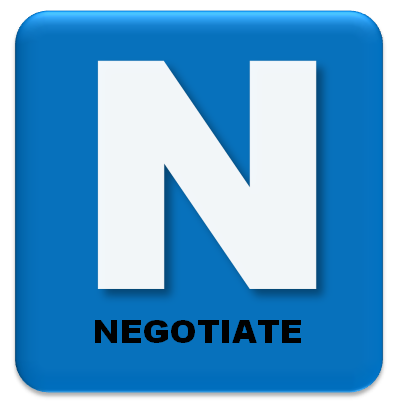
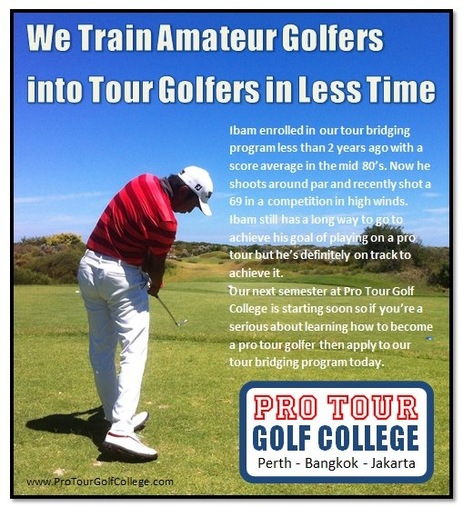
 RSS Feed
RSS Feed



